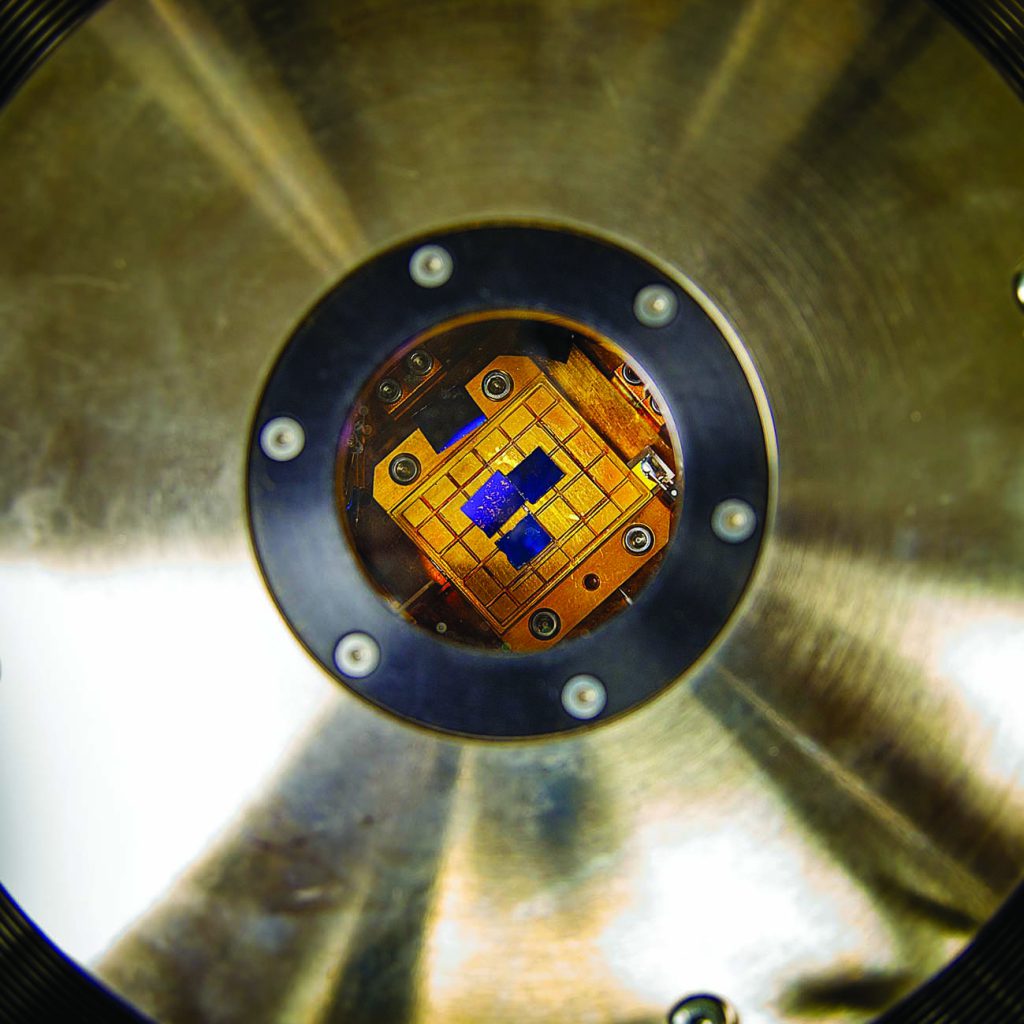
Creating Graphene Circuits with ‘DNA Origami’
A great conductor of electricity and heat, graphene is almost completely transparent but also so dense nothing can pass through it. Nebraska researchers are harnessing DNA to make this remarkable material more useful in a variety of electronic applications.
The single-atomic-layer graphene is the thinnest and strongest form of carbon. Its two-dimensional structure is made of atoms arranged in a honeycomb pattern. Since its discovery earlier this century, graphene has sparked great interest from physicists, chemists and materials scientists.
Alexander Sinitskii’s lab previously devised an approach to create atomically precise graphene nanoribbons, narrow strips of graphene only a few carbon atoms wide. Their miniscule size and highly tunable electronic properties make these ribbons promising building blocks of miniature electronic devices.

While graphene nanoribbons are nearly endlessly functional, they’re difficult to assemble into the required electronic circuits. Enter DNA nanotechnology to create artificial structures that mimic the cellular building block.
Forget what you learned in science class about DNA strands only forming in the classic double-helix form. The key to using DNA to shape graphene nanoribbons is the ability to controllably fold DNA strands into a variety of other shapes such as squares, circles and even three-dimensional boxes. Known whimsically as “DNA origami,” this technique allows researchers to build nanoscale devices that are opening new possibilities in biomedical research and materials science.
A three-year, $4.5 million grant from the U.S. Department of Defense’s Office of Naval Research funds the research led by Sinitskii with collaborators from New York University, University of Chicago, University of California, Berkeley, and University of Illinois at Urbana-Champaign.
Graphene’s properties already have paved the way to applications in transparent conductive films, electronic and opto-electronic devices, actuators, sensors, composites and more. Graphene nanoribbons assembled with DNA nanotechnology could help meet the increasing need for ever-smaller electronic components in a variety of devices, said Sinitskii, professor of chemistry and part of the Nebraska Center for Materials and Nanoscience.
“We know how to make graphene nanoribbons, and now we want to employ DNA nanotechnology to assemble them into functional electronic structures for device applications.”
+ Additional content for Creating Graphene Circuits with ‘DNA Origami’
Nebraska news release: Nebraska-led team to explore DNA as tool to build graphene circuits
Media mention: Nanomaterials developed at UNL could power microscopic circuits (Lincoln Journal Star, 10/23/2019)
